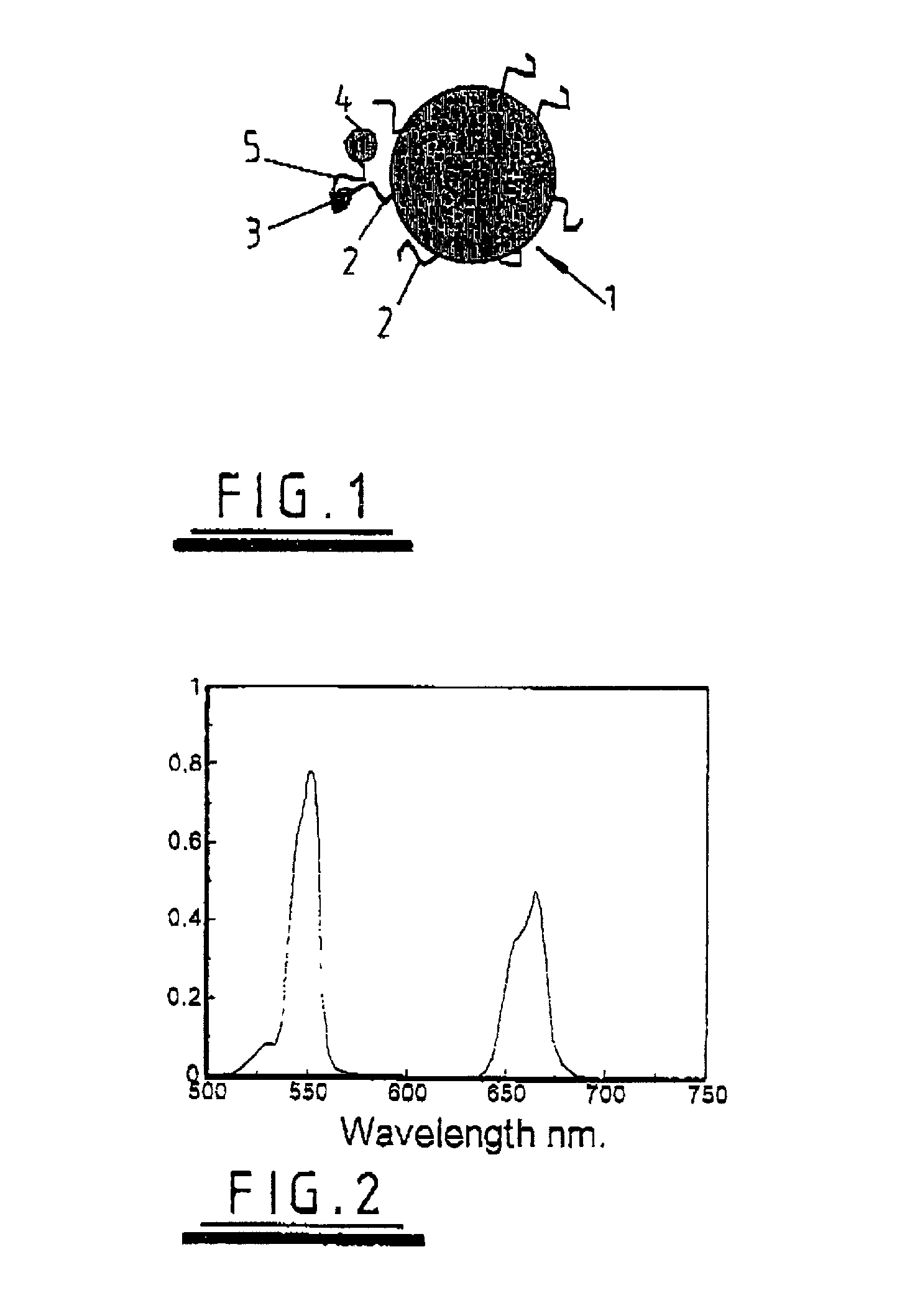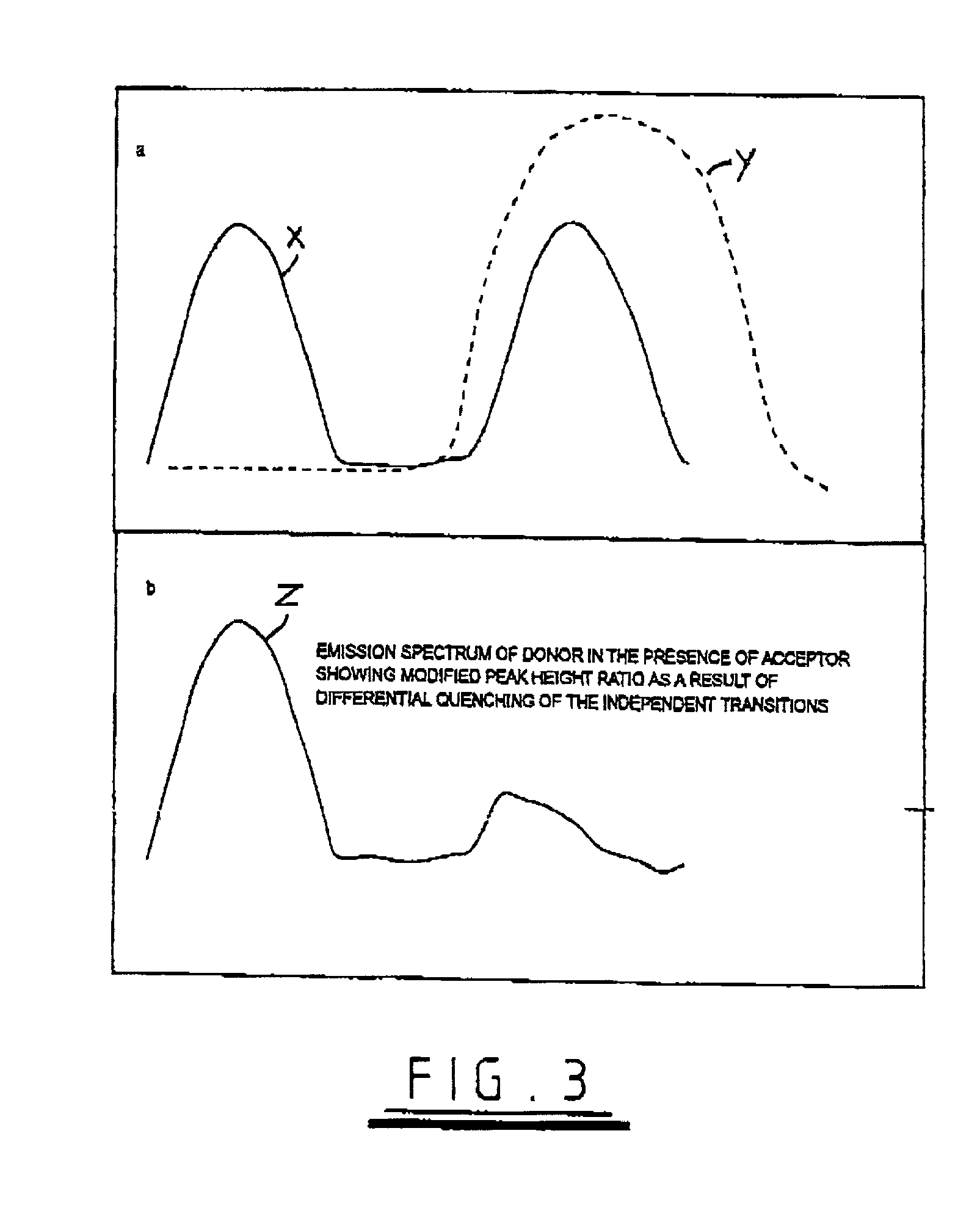Luminescence assays
a technology of luminescence and assays, applied in the field of luminescence assays, can solve the problems of sensitivity limit set by background, inability to efficiently transfer energy, and relatively insensitive energy transfer processes
- Summary
- Abstract
- Description
- Claims
- Application Information
AI Technical Summary
Benefits of technology
Problems solved by technology
Method used
Image
Examples
Embodiment Construction
[0021]According to the present invention there is provided a method of performing an energy transfer luminescence assay to determine an analyte in which a donor species is irradiated to raise the donor species to an excited state, and the analyte causes a change in the excitation condition of at least one of the donor species and an acceptor species and said change is monitored to determine the analyte wherein[0022](i) the donor species is provided as, in or adsorbed to a solid phase and is an up-conversion medium capable of effecting, by energy pooling or otherwise, an energy transition to an excited state by absorption of electromagnetic radiation having an energy less than that of said transition,[0023](ii) the acceptor species is bound or is capable of being bound directly or indirectly to the surface of said solid phase,[0024](iii) the donor species is irradiated with said electromagnetic radiation, and[0025](iv) luminescence is detected in at least one spectral region characte...
PUM
| Property | Measurement | Unit |
|---|---|---|
| Decay rate | aaaaa | aaaaa |
| Efficiency | aaaaa | aaaaa |
| Absorbance | aaaaa | aaaaa |
Abstract
Description
Claims
Application Information
 Login to View More
Login to View More - R&D
- Intellectual Property
- Life Sciences
- Materials
- Tech Scout
- Unparalleled Data Quality
- Higher Quality Content
- 60% Fewer Hallucinations
Browse by: Latest US Patents, China's latest patents, Technical Efficacy Thesaurus, Application Domain, Technology Topic, Popular Technical Reports.
© 2025 PatSnap. All rights reserved.Legal|Privacy policy|Modern Slavery Act Transparency Statement|Sitemap|About US| Contact US: help@patsnap.com



